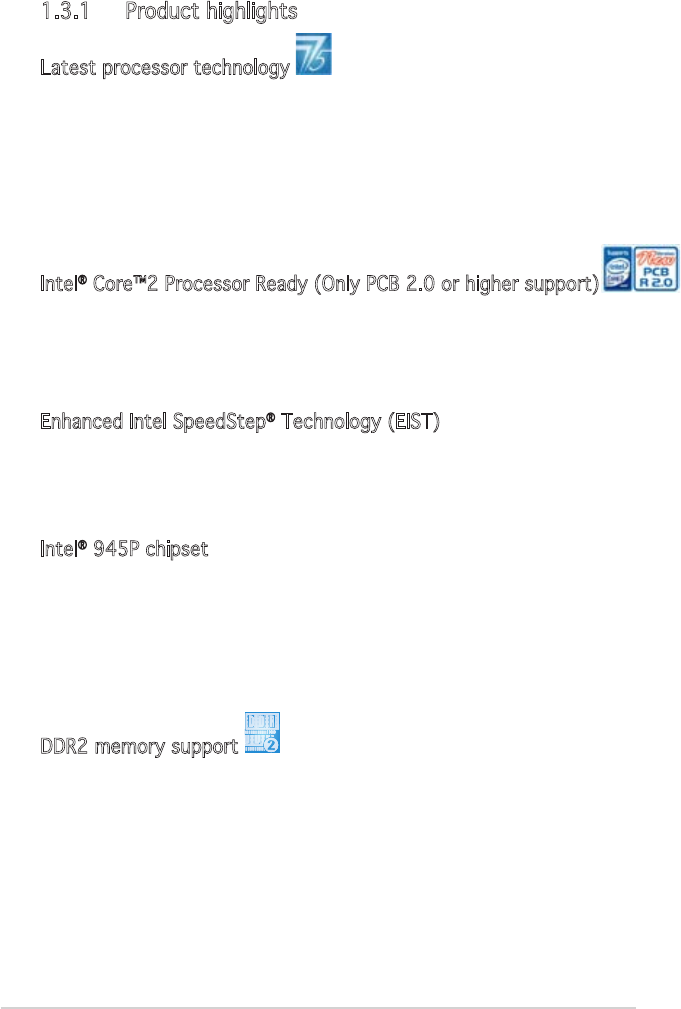
1-2 Chapter 1: Product introduction
1.3 Special features
1.3.1 Product highlights
Latest processor technology
The motherboard comes with a 775-pin surface mount Land Grid Array
(LGA) socket designed for the Intel
®
Pentium
®
4 processor in the 775-land
package. The motherboard supports the Intel
®
Pentium
®
4 processor with
1066/800/533 MHz Front Side Bus (FSB). The motherboard also supports
the Intel
®
Hyper-Threading Technology and is fully compatible with Intel
®
06 (for PCB 2.0 or higher only) 05B/05A or 04B/04A processors. See
page 2-6 for details.
Intel
®
Core™2 Processor Ready (Only PCB 2.0 or higher support)
This motherboard supports the latest Intel
®
Core™2 processor in the
LGA775 package. With the new Intel
®
Core™ microarchitecture technology
and 1066/800MHz FSB, Intel
®
Core™2 processor is one of the most
powerful and energy efcient CPU in the world.
Enhanced Intel SpeedStep
®
Technology (EIST)
The Enhanced Intel SpeedStep
®
Technology (EIST) intelligently manages
the CPU resources by automatically adjusting the CPU voltage and core
frequency depending on the CPU loading and system speed or power
requirement. See page 4-26 and the Appendix for details.
Intel
®
945P chipset
The Intel
®
945P Memory Controller Hub (MCH) and the ICH7R I/O controller
hub provide the vital interfaces for the motherboard. The MCH provides the
processor, dual-channel memory, and PCI Express interfaces.
The Intel
®
ICH7R Southbridge represents the seventh generation I/O
controller hub that provides the interface for the storage, I/O, PCI Express,
and 8-channel high denition audio interfaces.
DDR2 memory support
The motherboard supports DDR2 memory which features data transfer rates
of 667/533/400 MHz to meet the higher bandwidth requirements of the
latest 3D graphics, multimedia, and Internet applications. The dual-channel
DDR2 architecture doubles the bandwidth of your system memory to boost
system performance, eliminating bottlenecks with peak bandwidths of up
to 10.7 GB/s. See pages 2-13 to 2-16 for details.


















